#richard almeida
Explore tagged Tumblr posts
Text
Episode 72 - Richard Almeida - The Daily Plan-it 01222025
#1electric#1sec#1staffign#1staffing#chamber#construction#consulting#conversation#des moines#financing#houston#interview#iowa#Jimmy Olsen#Knowledge#latino#learning#minority#mybuddyjimmy#richard almeida#spoken word#texas
0 notes
Text

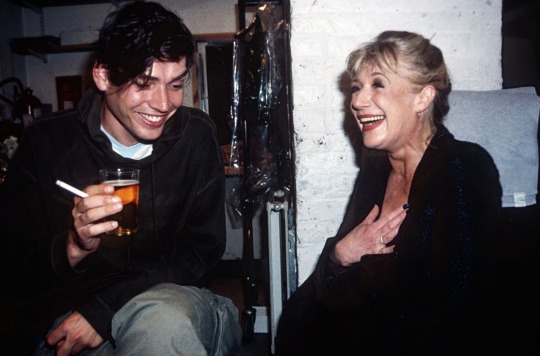
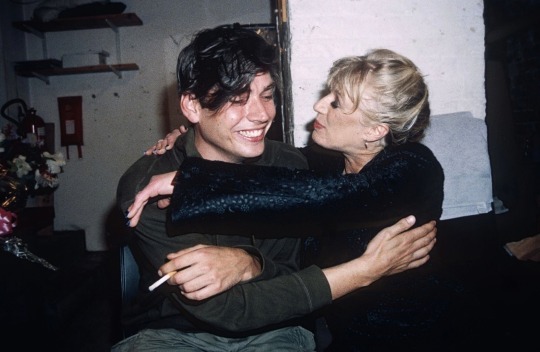
Marianne Faithfull and Alex James of Blur at the Almeida Theatre in 1996. Photos by Richard Young.
#Marianne Faithfull#Alex James#Blur#Richard Young#backstage#Almeida Theatre#90s#nineties#photography#singer#looks like mother and son lmao
143 notes
·
View notes
Text
Complete the 4 novels you're currently reading ❌❌❌
Start yet another novel because it seemed intriguing ✅✅✅
#orv is really good and i'm enjoying it a lot so far#but i feel like i need a little time away from it and contemplate on the tragedy of 1863#i ploughed through that arc a little too fast and the feels are catching up with me only now#jeweller richard has been really good too but i seem to be incapable of reading it unless i'm outside. it's like my. touching grass novel#to paradise is wonderful and i love the worldbuilding and cannot wait for hanya yanagihara to work her magic on me again#but i also wanna read it sometime when i can be free of any distractions and let it consume me body and soul#maali almeida was so much fun i loved the writing and i really wanna finish it because it's the first book i started this year#but i can already tell i won't be able to finish it unless i get the physical copy😔#anyway this new book isn't too long and i can finish it within 2 days if i try hard enough#wish me luck🫡#cina's stuff#🍀
9 notes
·
View notes
Text

#193 the hitman's bodyguard (2017)
Darius Kincaid (Samuel L. Jackson) es un asesino a sueldo que es obligado a testificar contra uno de los peores asesinos mafiosos llamado Vladislav (Gary Oldman), para ello detienen a la mujer de Darius, Sonia (Salma Hayek) y la meten en la cárcel.
Amelia Roussel (Élodie Yung) es una joven policía de la Interpol que sospecha de juego sucio dentro de la propia organización para asesinar a Darius, por eso le pide a su expareja Michael Bryce (Ryan Reynolds) que la ayude para que Darius llegue a testificar.

Michael es un guardaespaldas de clase triple A que ha sido degradado por perder a uno de sus grandes clientes y está intentando sobrevivir dentro de su trabajo, ha perdido a todos sus clientes y hace pequeñas chapuzas para poder mantenerse en el negocio.
Michael cree que esto se debe a que le confesó, a su entonces pareja, Amelia, a quién iba a proteger y ella le arruinó la carrera y por eso saboteó su propia relación hasta que ella le dejó, pero ella sabe que él es el profesional más integro e imposible de sobornar, por eso le pide que acompañe a Darius hasta Ámsterdam para el juicio.


Darius está muy enamorado de su mujer, pero no está por la labor de morir, por eso prefiere hacer las cosas por su cuenta, así como Darius no es delicado, le encanta entrar a tiros y haciendo el mayor ruido posible. Michael es un asesino de guante blanco, que usa silenciador, y se mueve como un ninja. Por eso ambos chocan tanto.


Se suceden muchas situaciones cómicas con ambos personajes mientras avanzan hacia el juicio y son perseguidos por los hombres de Vladislav para asesinarlos.


En el camino ambos hablan de su situación sentimental y de como durante años han sido enemigos, es entonces cuando Darius se confiesa con él y le dice que Amelia no tiene nada que ver con el asesinato del cliente de Michael, sino que fue él, que estaba realizando otro trabajo y se topó con la oportunidad de matar a ese cliente malvado y simplemente lo hizo, lo que hace enfurecer a Michael.


Darius le recuerda que Michael es guarda espaldas de malas personas, que necesitan un guardaespaldas triple A porque hacen cosas muy malvadas.



Se libran de morir varias veces y al final se reúnen a última hora con Amelia. Darius declara, pero todo estalla porque los hombres de Vladislav no van a permitir que entre en la cárcel y se lían a tiros para poder dejar que huya, mientras Darius, Amelia y Michael van tras de él.


Michael y Amelia se reconcilian cuando a él le disparan y mientras Darius va contra Vladislav, mientras este sube a la azotea para que un helicóptero lo saque de allí.



Darius derriba el helicóptero y mata a Vladislav por joder con su mujer y con su amigo Michael, por lo que todo acaba bien.


Liberan a Sonia, la mujer de Darius mientras este es encarcelado por sus crímenes, en el último momento se escapa y se reúne con su esposa en el bar donde se conocieron. Mientras, Michael vuelve a recuperar su estatus de triple A y Amelia y él se van a vivir juntos y a ser felices.

#the hitman's bodyguard#salma hayek#samuel l jackson#gary oldman#Élodie Yung#ryan reynolds#film#cinema#pelicula#Russell De Rozario#richard e. grant#Joaquim de Almeida#Tsuwayuki Saotome#Kirsty Mitchell#Antoin Cox
2 notes
·
View notes
Text

#read#reading#books#goodreads#booklr#book#tbr#new year#2024#milkman#lotr#drive your plow over the bones of the dead#sapiens#Giovanni's room#the wager#the seven moons of maali almeida#ripe#entangled life#all that remains#this is going to hurt#say nothing#the stranger beside me#jonathan strange and mr norrell#words#word#wordslut#assembly#empire of pain#richard osman#the man who died twice
6 notes
·
View notes
Text

My December wrap up ☺️🫶🏼
Two of these were rereads 😇
#December 2023#2023 reads#the rereads were iwbft and love in the big city#the bullet that missed#the thursday murder club#richard osman#the seven moons of maali almeida#shehan karunatilaka#i was born for this#alice oseman#love in the big city#sang young park#anton hur#books#reading#bookblr#bookstagram#korean literature#Korean lit#rereads#wrap up
18 notes
·
View notes
Text

Saskia shares the joys of working on Shakespeare with Cheek by Jowl's Declan Donnellan and Joe Hill-Gibbins, "directors who have real imagination and love the text and storytelling".


#saskia reeves#2018 saskia reeves#tragedy of king richard the second#joe hill-gibbons#almeida#cheek by jowl#declan donnellan#much ado about nothing#mowbray#bushy#green#duchess of york#2019 saskia reeves#catherine standish#standish x lamb#catherine standish x jackson lamb#lamb x standish#jackson lamb x catherine standish#jackson x catherine
4 notes
·
View notes
Text

Currently Reading...
The Seven Moons of Maali Almeida By Shehan Karunatilaka
I received this for my Birthday earlier this year, gifted from the same person who bought me Suazanna Clarke’s Piranesi, which was a masterpiece.
I know nothing about this book and haven’t even read the blurb on the back, but I trust my friend’s judgement so I’m going in blind.
Before this, I’d just finished the 4th instalment of The Thursday Murder Club, The Last Devil to Die. In my opinion, it was arguably the best one yet.
The series is such an easy read, with great characters that feel like old friends.
#The Seven Moons of Maali Almeida#Shehan Karunatilaka#books#literature#reading list#booklr#currently reading#bibliophile#Maali Almeida#The Thursday Murder Club#The Last Devil to Die#Richard Osman
4 notes
·
View notes
Text
gratuitous rape scene for shock value. groundbreaking.
#tw: rape#unnecessary tbh#like literally not needed. the lewdness the perversion the threat of force. it's all in his words already#“it cannot be avoided but by this... it WILL NOT be avoided but by this”#> this line alone is so chillingly threatening I mean. come on.#richard iii#richard iii: almeida (2016)
1 note
·
View note
Text
MANOEL DE OLIVEIRA: A CAREER by Richard Peña
Chances are that within a few years Portuguese director Manoel de Oliveira will be the first filmmaker in history to celebrate his own centenary with the release of a brand-new film. Having just turned 96 (at the time of this writing), and showing no signs of slowing down, the remarkably vigorous Oliveira, who could easily pass for a man 20 years younger, is brimming with plans and ideas for the future. Yet Oliveira's longevity is really just a footnote on what already is one of the extraordinary bodies of work in film history.
Born in 1908 in Oporto, the son of a successful and innovative industrialist, Oliveira developed a passion for cinema early, influenced at first especially by the work of Griffith, Stroheim and the French avant-garde. He recalls the tremendous impact Dreyer's JEANNE D'ARC had on him, as well as the first Soviet montage films screened in Portugal. Joining in with a group of like-minded enthusiasts, Oliveira attempted to make a film about Portugal's involvement in World War One-the first of many projects throughout his career that he would be forced to abandon. After gaining some practical experience working with Italian director Rino Lupo on a film about the Virgin of Fatima, Oliveira in 1931-at the age of 23-completed his first film, the half-hour HARD LABOR ON THE RIVER DOURO. A portrait of a river that geographically defines Oporto, as well as of the workers who make their livings along its bank, the film demonstrates Oliveira's familiarity with the "city symphony" genre that by then was a staple of avant-garde work. Here as in so much of his later work Oliveira's approach to editing is essentially musical, more focused on creating rhythms and movements than establishing temporal or spatial relationships.
Throughout the 1930's, Oliveira mainly worked in the family's business, helping supervise his father's factories when he wasn't driving race cars (another early passion) or, occasionally, making short films on subjects ranging from baroque sculpture to the Portuguese automotive industry. In 1941, he began work on what would become his first feature, ANIKI-BOBO. A quietly powerful look at children's games, and their relationship to adult behavior, ANIKI-BOBO was shot almost entirely in real locations using natural light sources. Two professional actors headed the cast, but the rest of his players were kids recruited off the streets. Widely criticized when released-the Salazar dictatorship was in full swing-the film was also a failure at the box office, but today is commonly cited as a kind of precursor to the neo-realist style that would sweep across Italy and then the rest of Europe in just a few years.
Discouraged, and by then a husband and father, Oliveira again devoted himself primarily to his family business endeavors, partially satisfying his artistic urges by working on scripts that he would only share with a small circle of friends. In the mid-1950's, intrigued by the possibilities of color, he embarked on his next film, THE PAINTER AND THE CITY, a stunning visual essay on his friend, the Oporto painter Antonio Cruz. The film was well received and was even shown in o number of international film festivals. A commission from the government enabled him to make
BREAD (1959), a brilliantly edited, Vertov-like study of the Portuguese baking industry.
THE PASSION OF CHRIST (1963) brought Oliveira to the small town of Curalha, in the remote Tras-os-Montes region of northeast Portugal. Each year, its inhabitants re-enact the passion and death of Christ—a common enough spectacle throughout Europe, yet here Oliveira masterfully shows how the experience of putting on and then performing the actual play affects its players throughout the rest of the year. In a decade known for various experiments in mixing documentary with fic-tion, Oliveira's THE PASSION OF CHRIST is surely one of the most remarkable, patiently revealing the complex interpersonal relationships and tensions that lay just below the surface of the spectacle.
In 1971, Oliveira turned 63, and he finally released his second feature, THE PAST AND THE PRESENT. All of Oliveira's work up to this point had had its basis in the documentary, in the encounter or confrontation of the camera with the physical world; beginning with this film, his work would shift 180 degrees and focus almost obsessively on notions of theatricality, on artifice and convention. Based on Vicente Sanchez's play, THE PAST AND THE PRESENT is a deceptively light (but actually quite brutal) dissection of upper-class morality; it was followed relatively quickly (for Oliveira) with his third feature, and one of his best, BENILDE OR THE VIRGIN MOTHER (1973). Adapted from a play by his friend Jose Regio, BENILDE deals with a case of "hysterical pregnancy" that increasingly takes on religious overtones; Oliveira refuses to "open up" the play, as is so often done in screen adaptations of theatrical works, but rather uses his camera to explore the limits of the theatrical.
If Oliveira had stopped filming after ANIKI-BOBO, he most probably would have deserved a generous footnote in film history; if he had stopped after BENILDE, that note might have been expanded to a paragraph or two, lamenting the director's great but unfulfilled potential. With his next film, however, Oliveira leapt into the first ranks of contemporary directors. Commissioned by Portuguese television, and originally broadcast in six episodes, DOOMED LOVE (1978) tells the story of two young lovers, Teresa and Simao, whose families oppose their union. Here, Oliveira perfects the style he had been developing since returning to fiction: shots are very long and generally static; his actors, facing frontally, deliver their lines often with a minimum of inflection; the sets make little or no attempt at verisimilitude. And yet, by emphasizing the artifice, by highlighting conventions of speech and movement, Oliveira manages to create a purer expression of the red-hot emotions that lay at the heart of Castelo Branco's classic novel.
This strange artifact from what had been an almost unknown only just thrown off the shackles of dictatorship a few years before landed like a UFO on the international festival circuit in the late 1970's, and after producing equal amounts of bafflement and amazement, became one of the most talked about films of the time. DOOMED LOVE would have been a tough act for anyone to follow, but Oliveira came through with the film that for many critics remains his masterpiece. FRANCISCA (1981) is based on a novel by Agustina Bessa Luis, another of Oliveira's favorites, that deals with an incident in the life of Castelo Branco, the author of DOOMED LOVE. In love with Fanny, a young English girl, he is despondent when she chooses his friend Jose Augusto instead. Yet after marriage, Jose Augusto refuses to have anything to do with her, and she dies a virgin. Critics had already written about Oliveira's "trilogy of frustrated loves," noting the thematic similarities between THE PAST AND THE PRESENT, BENILDE and DOOMED LOVE; with FRANCISCA one could now speak of a "tetralogy," as the film deepened Oliveira's treatment of that theme as well as moved even further into his "theatricalized" cinematic style.
With the relative box office success and critical acclaim of DOOMED LOVE and FRANCISCA, Oliveira could finally look forward to a "normal" career as a director-only of course he was now in his mid-70s. Happily, his age proved no limitation on his output, and over the next two decades he would direct sixteen additional features, a number of shorts, and a masterful seven-hour screen adaptation of Claudel's THE SATIN SLIPPER (1985). He would also begin work on a feature for which he is shooting several minutes a year that will be released only after his death.
Oliveira's filmmaking style has continued to evolve; the rigidly formal theatricality of his 70's and early 80's features has given way to more conventional styles of staging action. He has also had the chance to work with some of cinema's finest actors-Marcello Mastroianni, Catherine Deneuve, Irene Papas, Michel Piccoli, John Malkovich, etc.—so his work with actors has become more naturalistic. Yet there is rarely any mistaking a film by Manoel de Oliveira for one by anyone else. There has continued to be in his work a fascination with the process of A Talking Picture (2003) adaptation: what happens to a text, something Oliveira regards as inherently unstable, when it is "fixed" on the screen? There is an extraordinary economy of gesture in his work, as he seems almost painfully aware how each cut, camera movement or framing will affect the text. Another recurring feature of Oliveira's work is his sense of narrative rhythm; as noted earlier, his approach to montage has much less to do with the demands of storytelling then they do with his attention to rhythm, tone and movement. Shots and even sequences are often repeated, held what might seem to be too long or glimpsed only briefly.
A TALKING PICTURE (2003) exemplifies much of what is best and most distinctive in Oliveira's work. The film examines the interaction of history and myth, and the interaction of both with the monuments, buildings and places in the world around us. A kind of guided tour of the Mediterranean basin given by a history professor to her young daughter, their journey becomes a kind of modern odyssey, reversed in direction and now an attempt to re-join the husband instead of the wife. On their journey, they are joined by three famous actresses-Catherine Deneuve, Irene Papas, Stefania Sandrelli — each in their way linked to the sites of civilization visited along the way. As each is also depicted as a kind of legend in her own right, the actresses take on a kind of mythic quality, the contemporary version of goddesses or muses or some other supernatural deities. Their halting dialog, caused at least partially by their often being asked to speak languages with which they don't feel entirely comfortable, makes them seem as if at times they're actually quoting, another aspect of their otherworldliness.
Oliveira weaves a dense, provocative allegory here, with the education of the child seen as a complex mix of both the world and the ideas that have shaped it over time. Yet, lurking in the background is humanity's capacity for negation, for a violence and destructiveness that all the works of civilization visited on the journey here have tried to tame or at least control. The final image of the film, in a sense, says it all: Malkovich's, and our, confrontation with the darkest corner of the human psyche.
It's a stunning and harrowing moment, and one that only Oliveira could have pulled off.
— Richard Peña, Program Director, Film Society of Lincoln Center Associate Professor, Film Studies, Columbia University
A Talking Picture (2003) Kino Video 333 West 39th Street NY, NY 10018 www.kino.com
#Manoel de Oliveira#Leonor Silveira#Filipa de Almeida#John Malkovich#Catherine Deneuve#Stefania Sandrelli#Irene Papas#Luís Miguel Cintra#Michel Lubrano di Sbaraglione#François Da Silva#Nikos Hatzopoulos#António Ferraiolo#Alparslan Salt#Ricardo Trêpa#David Cardoso#Júlia Buisel#Kino Video#Richard Peña#Um Filme Falado#A Talking Picture
1 note
·
View note
Text
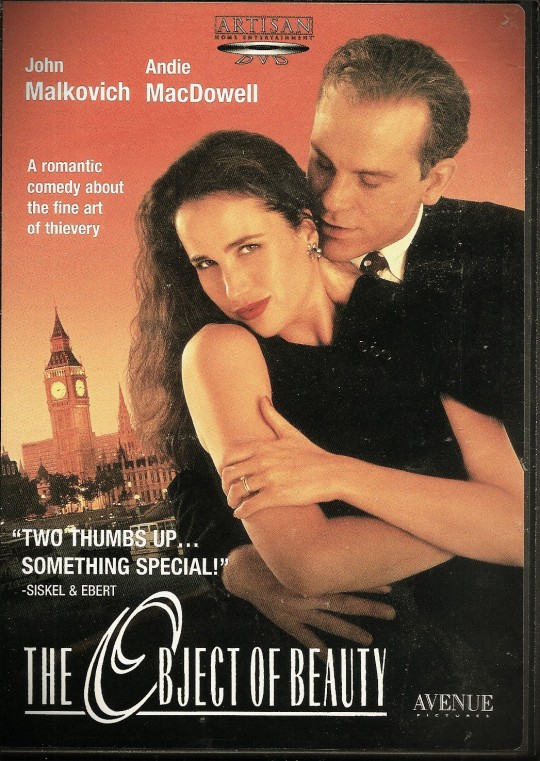
Bad movie I have The Object of Beauty 1991
#The Object of Beauty#John Malkovich#Andie MacDowell#Lolita Davidovich#Rudi Davies#Joss Ackland#Bill Paterson#Ricci Harnett#Peter Riegert#Jack Shepherd#Rosemary Martin#Roger Lloyd Pack#Andrew Hawkins#Pip Torrens#Stephen Churchett#Annie Hayes#Richard Ireson#Barry J. Gordon#Jeremy Sinden#Ginger Corbett#John Crocker#Victoria Willing#Lara De Almeida#Liz Daniels#Cole Parker#Wayne Bailey#Stewart Miller#Brian Coyle#Dillon O'Mahoney#Massimo Burlini
1 note
·
View note
Text

Marianne Faithfull and Marc Almond at the Almeida Theatre in 1996. Photo by Richard Young.
#Marianne Faithfull#Marc Almond#Soft Cell#Richard Young#Almeida Theatre#backstage#90s#nineties#photography#singer
32 notes
·
View notes
Text
Here's THE masterpost of free and full adaptations, by which I mean that it's a post made by the master.
Anthony and Cleopatra: here's the BBC version, here's a 2017 version.
As you like it: you'll find here an outdoor stage adaptation and here the BBC version. Here's Kenneth Brannagh's 2006 one.
Coriolanus: Here's a college play, here's the 1984 telefilm, here's the 2014 one with tom hiddleston. Here's the Ralph Fiennes 2011 one.
Cymbelline: Here's the 2014 one.
Hamlet: the 1948 Laurence Olivier one is here. The 1964 russian version is here and the 1964 american version is here. The 1964 Broadway production is here, the 1969 Williamson-Parfitt-Hopkins one is there, and the 1980 version is here. Here are part 1 and 2 of the 1990 BBC adaptation, the Kenneth Branagh 1996 Hamlet is here, the 2000 Ethan Hawke one is here. 2009 Tennant's here. And have the 2018 Almeida version here. On a sidenote, here's A Midwinter's Tale, about a man trying to make Hamlet. Andrew Scott's Hamlet is here.
Henry IV: part 1 and part 2 of the BBC 1989 version. And here's part 1 of a corwall school version.
Henry V: Laurence Olivier (who would have guessed) 1944 version. The 1989 Branagh version here. The BBC version is here.
Julius Caesar: here's the 1979 BBC adaptation, here the 1970 John Gielgud one. A theater Live from the late 2010's here.
King Lear: Laurence Olivier once again plays in here. And Gregory Kozintsev, who was I think in charge of the russian hamlet, has a king lear here. The 1975 BBC version is here. The Royal Shakespeare Compagny's 2008 version is here. The 1974 version with James Earl Jones is here. The 1953 Orson Wells one is here.
Macbeth: Here's the 1948 one, there the 1955 Joe McBeth. Here's the 1961 one with Sean Connery, and the 1966 BBC version is here. The 1969 radio one with Ian McKellen and Judi Dench is here, here's the 1971 by Roman Polanski, with spanish subtitles. The 1988 BBC one with portugese subtitles, and here the 2001 one). Here's Scotland, PA, the 2001 modern retelling. Rave Macbeth for anyone interested is here. And 2017 brings you this.
Measure for Measure: BBC version here. Hugo Weaving here.
The Merchant of Venice: here's a stage version, here's the 1980 movie, here the 1973 Lawrence Olivier movie, here's the 2004 movie with Al Pacino. The 2001 movie is here.
The Merry Wives of Windsor: the Royal Shakespeare Compagny gives you this movie.
A Midsummer Night's Dream: have this sponsored by the City of Columbia, and here the BBC version. Have the 1986 Duncan-Jennings version here. 2019 Live Theater version? Have it here!
Much Ado About Nothing: Here is the kenneth branagh version and here the Tennant and Tate 2011 version. Here's the 1984 version.
Othello: A Massachussets Performance here, the 2001 movie her is the Orson Wells movie with portuguese subtitles theree, and a fifteen minutes long lego adaptation here. THen if you want more good ole reliable you've got the BBC version here and there.
Richard II: here is the BBC version. If you want a more meta approach, here's the commentary for the Tennant version. 1997 one here.
Richard III: here's the 1955 one with Laurence Olivier. The 1995 one with Ian McKellen is no longer available at the previous link but I found it HERE.
Romeo and Juliet: here's the 1988 BBC version. Here's a stage production. 1954 brings you this. The french musical with english subtitles is here!
The Taming of the Shrew: the 1980 BBC version here and the 1988 one is here, sorry for the prior confusion. The 1929 version here, some Ontario stuff here, and here is the 1967 one with Richard Burton and Elizabeth Taylor. This one is the Shakespeare Retold modern retelling.
The Tempest: the 1979 one is here, the 2010 is here. Here is the 1988 one. Theater Live did a show of it in the late 2010's too.
Timon of Athens: here is the 1981 movie with Jonathan Pryce,
Troilus and Cressida can be found here
Titus Andronicus: the 1999 movie with Anthony Hopkins here
Twelfth night: here for the BBC, here for the 1970 version with Alec Guinness, Joan Plowright and Ralph Richardson.
Two Gentlemen of Verona: have the 2018 one here. The BBC version is here.
The Winter's Tale: the BBC version is here
Please do contribute if you find more. This is far from exhaustive.
(also look up the original post from time to time for more plays)
#adaptations#macbeth#hamlet#king lear#twelfth night#much ado about nothing#henry iv#henry v#richard iii#julius caesar#timon of athens#troilus and cressida
62K notes
·
View notes
Text
#shakespeare#very genuinely curious#not including that one globe midsummer out of spite.#the 2016 one not the 2014 one#shut up riley#poll#theatre#I’d include Oscar Isaac’s hamlet but to my knowledge there isn’t a recording available
381 notes
·
View notes
Text

Helena Almeida – Seduzir (2002)
* * * *
“When a man finds himself in motion, he always thinks up a goal for that motion. In order to walk a thousand miles, a man needs to think that there is something good at the end of those thousand miles. One needs a vision of the promised land in order to have the strength to move.” Leo Tolstoy (1828-1910), from “War and Peace” (1869), translated from the Russian by Richard Pevear and Larissa Volokhonsky “ Когда человек находится в движении, он всегда придумывает себе цель этого движения. Для того чтобы идти тысячу верст, человеку необходимо думать, что что-то хорошее есть за этими тысячью верст. Нужно представление об обетованной земле для того, чтобы иметь силы двигаться. “ (via finita–la–commedia)
[via Alive On All Channels]
#Helena Almeida#Seduzir#Leo Tolstoy#alive on All Channels#quotes#in motion#movement#vision#War and Peace
10 notes
·
View notes
Text

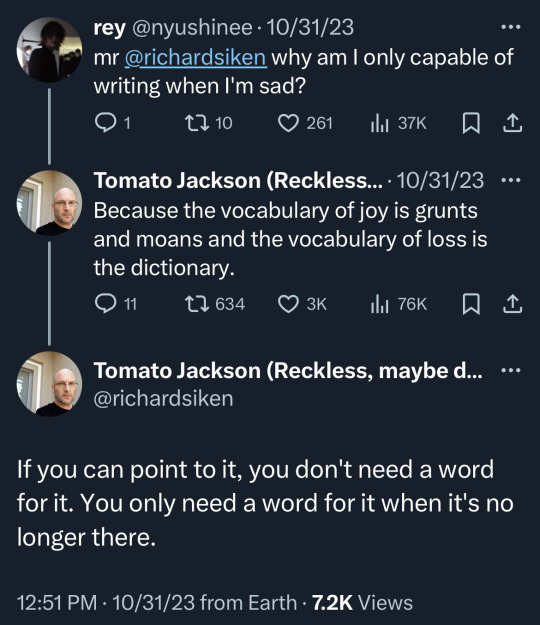
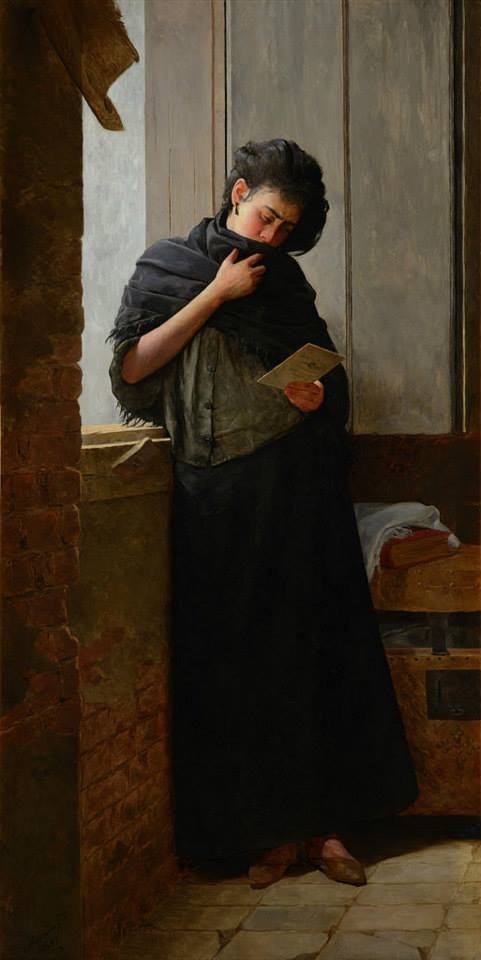
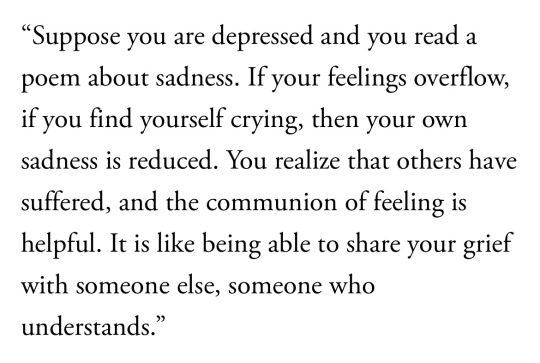

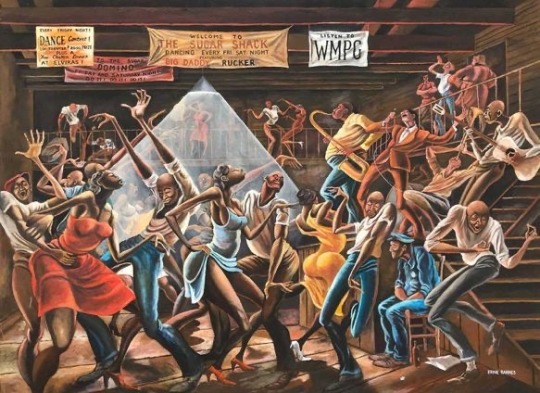



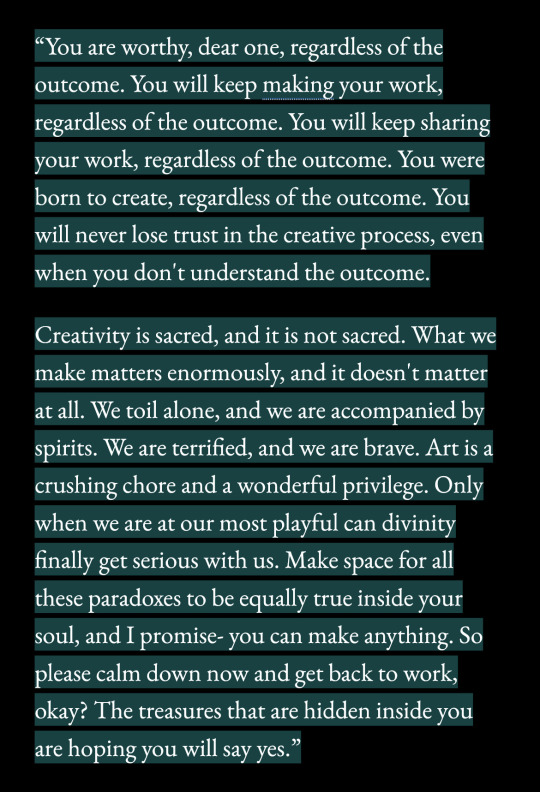
why do we create and why should create that silly thing? bc you gotta :) bc it will matter to someone :) <3
“Give Yourself Permission to Be Creative”, Ethan Hawke | Richard Siken | “Longing” by José Ferraz de Almeida Júnior (1899) | Smiley Blanton, from The Healing Power of Poetry (found in “Mary Oliver Saved My Life” by Greg Cook) | Catcher In The Rye by J.D. Salinger | The Sugar Shack by Ernie Barnes (1976) | the Gospel of Thomas | “Reading books is not just a pleasure: it helps our minds to heal” by Peter Leyland | The Immersive Van Gogh experience, photographed by Ben Davis | Big Magic: Creative Living Beyond Fear by Elizabeth Gilbert
#it matters to someone !!!!#even if that someone’s just you!!!!!#good then!!!#big magic is fuckin life changinggggg#love that book#highly recommend#^^#bbge.weaves#creativity#web weaving#thinking I’ll make more web weaves these are so therapeutic and fun#bbge.text#elizabeth gilbert#van gogh#ethan hawke
67 notes
·
View notes